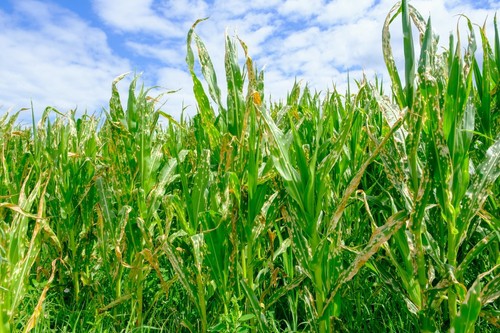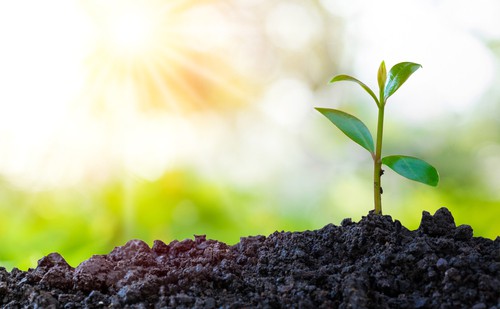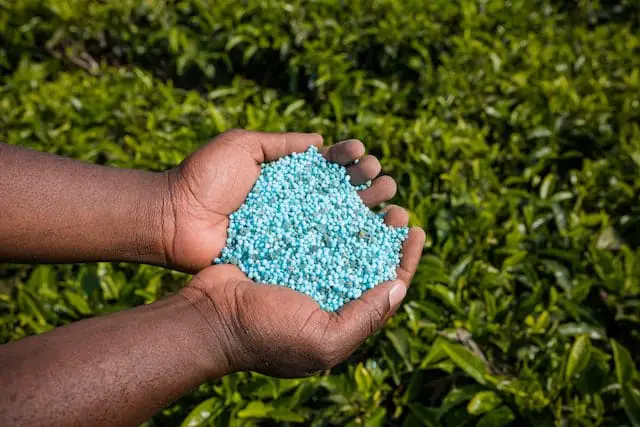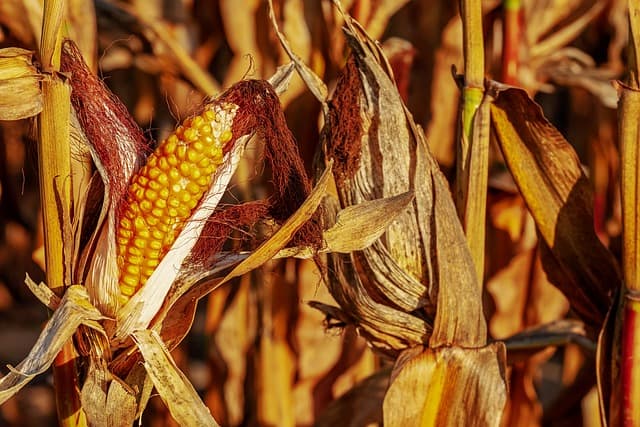Corn plants are a popular indoor plant due to their attractive foliage and low maintenance needs. However, like any plant, they can become sick and start to die if not cared for properly.
One common issue that corn plants face is overgrowth, which can lead to a dying plant. Pruning is an effective way to save a dying corn plant and help it thrive again.
Identifying a dying corn plant is the first step in saving it. Signs of a dying corn plant include yellowing leaves, brown tips, and wilting stems. Understanding the need to prune a dying corn plant is important, as they require bright, indirect light and well-draining soil.
Overwatering or underwatering can also cause a corn plant to die. Once the issue is identified, pruning techniques can be used to remove dead or overgrown parts of the plant and encourage new growth.
Key Takeaways:
- Identifying a dying corn plant is the first step in saving it.
- Understanding the needs of a corn plant is important to prevent it from dying.
- Pruning techniques can be used to remove dead or overgrown parts of the plant and encourage new growth.
Also read:
Identifying a Dying Corn Plant

When it comes to identifying a dying corn plant, there are several signs to look out for. Here are some of the most common indications that your corn plant is in trouble:
1. Signs of Overwatering
Overwatering is one of the most common causes of a dying corn plant. If the leaves of your corn plant are yellowing or starting to sag, this could be a symptom of dehydration and can also be a sign of root rot, which is caused by leaving the plant in standing water.
Brown tips or brown scorch marks on the leaves are also signs of overwatering.
2. Effects of Low Humidity
Corn plants are native to tropical regions, which means they thrive in high humidity environments. If the air in your home is too dry, your corn plant may suffer. The leaves may turn brown or develop brown tips, and the plant may become stunted in growth.
3. Indications of Disease
Corn plants are susceptible to a number of diseases, including leaf spot, stem rot, and root rot. If your corn plant’s leaves are turning brown, this could be a sign of disease. Dead leaves that fall off the plant are another indication that something is wrong.
4. Pest Infestations
Pests like spider mites, mealybugs, and scale insects can all cause damage to your corn plant. If you notice small holes in the leaves, or if the leaves start to curl or become discolored, this could be a sign of a pest infestation.
Understanding the Needs of a Corn Plant
Corn plants, also known as Dracaena fragrans, are popular houseplants that are relatively easy to care for. However, to keep them healthy and thriving, it is essential to understand their needs. In this section, we will cover the key factors that contribute to the growth and well-being of a corn plant.
1. Light Conditions

Corn plants prefer bright, indirect light, but they can also tolerate low-light conditions. Direct sunlight can cause the leaves to scorch, so it is best to keep the plant away from windows that receive intense sunlight.
If the plant is not getting enough light, it may become leggy and weak. In such cases, it is recommended to move the plant to a brighter location or consider using artificial lighting.
2. Watering Frequency
Corn plants prefer to be kept consistently moist but not waterlogged. Overwatering can lead to root rot, while underwatering can cause the leaves to droop and turn brown.
It is recommended to water the plant thoroughly when the top inch of soil is dry to the touch. The frequency of watering may vary depending on the temperature, humidity, and light conditions in the room.
3. Humidity and Temperature
Corn plants prefer moderate to high humidity levels, and they thrive in temperatures between 60 and 75°F. Low humidity can cause the leaves to turn brown and dry, while high temperatures can cause the leaves to wilt. It is recommended to mist the leaves regularly or use a humidifier to maintain the desired humidity levels.
4. Proper Care
To ensure healthy growth, corn plants require proper care. This includes regular pruning to remove dead or damaged leaves, fertilizing every two to three months during the growing season, and repotting every two to three years.
It is also essential to keep an eye out for pests such as spider mites and mealybugs, which can damage the plant.
Pruning Techniques for a Corn Plant
1. When to Prune
Pruning a corn plant is necessary to promote healthy growth and remove any dead or diseased parts. It is recommended to prune a corn plant during the growing season, which is typically from spring to fall. However, if the plant is severely damaged, it can be pruned at any time of the year.
2. How to Prune
To prune a corn plant, start by inspecting the plant for dead or diseased leaves, stems, or branches. Use pruning shears to make clean cuts at the base of any dead or diseased parts.
It is also important to trim back any stems that have grown too tall or are too leggy. Cut these stems back to the desired height, leaving a few leaves on the stem.
When trimming back the stems, it is important to make the cut just above a leaf node. A leaf node is where a leaf grows out of the stem. Cutting just above the leaf node will encourage the plant to grow new stems and leaves from that point.
3. Tools for Pruning

To properly prune a corn plant, it is important to have the right tools. The following tools are recommended for pruning a corn plant:
- Pruning shears: These are essential for making clean cuts on the plant.
- Rubbing alcohol: Use rubbing alcohol to disinfect the pruning shears before and after use to prevent the spread of any plant diseases or infections.
- Gloves: Wear gloves to protect your hands from any sharp edges on the plant or from any plant sap that may irritate your skin.
Reviving a Dying Corn Plant
When a corn plant starts to look sickly, it’s important to act quickly to save it. Here are some tips for reviving a dying corn plant:
1. Adjusting Watering Techniques
Overwatering or underwatering can cause a corn plant to wilt and die. If the soil is too dry, the plant will start to droop and the leaves will turn brown. On the other hand, if the soil is too wet, the roots can become waterlogged and start to rot.
To avoid overwatering, make sure the pot has plenty of drainage holes and use a well-draining soil mix. Water the plant only when the top inch of soil is dry to the touch.
2. Changing Soil Conditions
If the soil is too compacted or doesn’t drain well, it can cause root rot and other problems. To prevent this, use a potting soil mix that contains perlite or vermiculite to improve drainage.
If the soil is too acidic or alkaline, it can also cause problems. Test the soil pH and adjust it if necessary with a soil pH kit.
3. Addressing Root Rot
If the roots are rotting, it’s important to act quickly to save the plant. Remove the plant from the pot and inspect the roots. If they are brown, mushy, and have a foul odor, they are likely infected with root rot.
To treat root rot, cut away the affected roots with sterile scissors and repot the plant in fresh soil. Be sure to disinfect the pot with a solution of one part bleach to nine parts water before repotting.
By adjusting watering techniques, changing soil conditions, and addressing root rot, you can revive a dying corn plant and help it thrive again.
Additional Care Tips for Corn Plants
Corn plants are relatively easy to care for, but they do require some attention to thrive. In addition to pruning, there are a few other things that you can do to keep your corn plant healthy and looking its best.
1. Light and Temperature Control
Corn plants prefer bright, indirect light. They can tolerate some shade, but too much can cause the leaves to become pale and leggy. In the spring and summer, it’s a good idea to move your corn plant outside to a shaded area to give it a boost of natural light. Just be sure to bring it back inside before temperatures drop below 60°F (15°C).
Corn plants are sensitive to temperature fluctuations and drafts, so it’s important to keep them in a stable environment. They prefer temperatures between 60-75°F (15-24°C) during the day and slightly cooler at night. Avoid placing your corn plant near air conditioning vents or drafty windows.
2. Fertilizing and Repotting

Corn plants are not heavy feeders, but they do benefit from occasional fertilization. During the growing season (spring and summer), fertilize your corn plant once a month with a balanced, water-soluble fertilizer. Be sure to follow the manufacturer’s instructions for application rates and dilution.
Repotting is only necessary when the plant has outgrown its current pot or the soil has become depleted. When repotting, choose a pot that is only slightly larger than the current one, and use a well-draining potting mix. Be sure the new pot has drainage holes to prevent water from accumulating in the soil.
3. Preventing Disease and Pests
Corn plants are generally resistant to pests and diseases, but they can still fall victim to common houseplant problems. To prevent issues, keep your corn plant clean and dust-free. Wipe the leaves with a damp cloth or give them a gentle shower to remove dust and debris.
If you notice any signs of pests or disease, act quickly to prevent the problem from spreading. Common pests that affect corn plants include spider mites, mealybugs, and scale insects. Treat infestations with insecticidal soap or neem oil, following the manufacturer’s instructions carefully.
By following these additional care tips, you can help ensure that your corn plant stays healthy and vibrant. With proper care, your corn plant can live for many years and continue to add beauty to your home or office.
Frequently Asked Questions
How do I revive a dying corn plant?
To revive a dying corn plant, you should start by identifying the cause of the problem. This could be due to overwatering, underwatering, poor soil quality, or pest infestations.
Once you have identified the issue, you can take appropriate steps to fix it. For example, if the plant is overwatered, you should reduce the frequency of watering and ensure that the soil is well-draining.
If the plant is underwatered, you should increase the frequency of watering and ensure that the soil is moist but not waterlogged.
What can I do if my indoor corn plant is wilting?
If your indoor corn plant is wilting, it could be due to a number of reasons, including overwatering, underwatering, or pest infestations. To fix this issue, you should first identify the cause of the problem.
If the plant is overwatered, you should reduce the frequency of watering and ensure that the soil is well-draining. If the plant is underwatered, you should increase the frequency of watering and ensure that the soil is moist but not waterlogged.
If the issue is due to pest infestations, you should take steps to eliminate the pests.
Why are the leaves of my corn plant turning brown and yellow?
The leaves of a corn plant can turn brown and yellow due to a number of reasons, including overwatering, underwatering, poor soil quality, or pest infestations.
To fix this issue, you should first identify the cause of the problem. If the plant is overwatered, you should reduce the frequency of watering and ensure that the soil is well-draining.
If the plant is underwatered, you should increase the frequency of watering and ensure that the soil is moist but not waterlogged. If the issue is due to poor soil quality, you should consider repotting the plant in fresh, well-draining soil.
What are some common problems with dracaena corn plants?
Some common problems with dracaena corn plants include overwatering, underwatering, poor soil quality, pest infestations, and lack of light.
To avoid these issues, you should ensure that the plant is watered appropriately, the soil is well-draining, the plant is not infested with pests, and the plant is placed in an area with adequate light.
Can I cut the brown tips off my corn plant leaves?
Yes, you can cut the brown tips off your corn plant leaves. This will not harm the plant and can help to improve its appearance. However, it is important to identify the cause of the brown tips and take steps to fix the underlying issue to prevent further damage to the plant.
Should I cut the top off my corn plant to promote growth?
No, you should not cut the top off your corn plant to promote growth. This can actually harm the plant and stunt its growth. Instead, you should focus on providing the plant with adequate light, water, and nutrients to promote healthy growth.

Hey, I’m Lisa and I’ve been an avid gardener for over 30 years. I love writing, talking and living in the garden! Feel free to connect with me on my socials below


